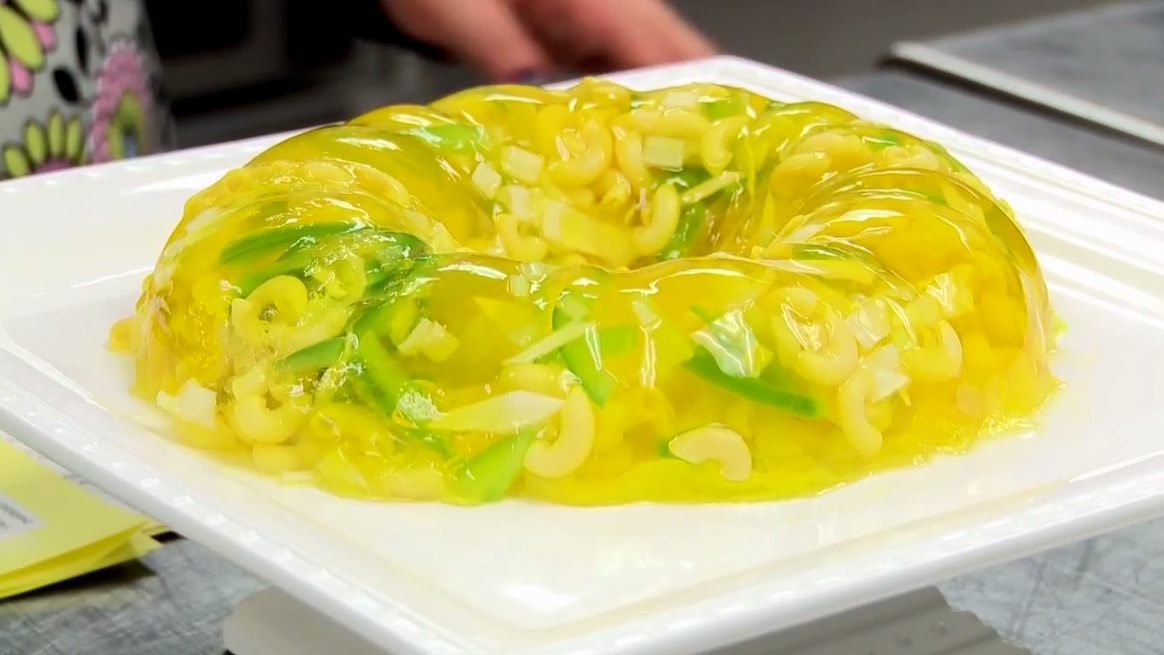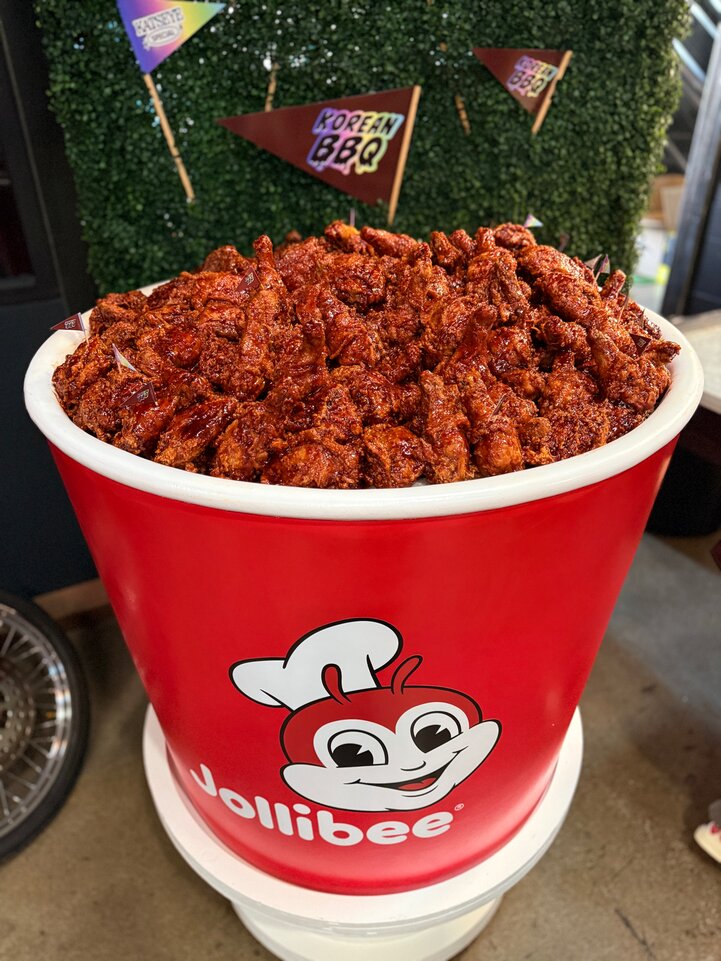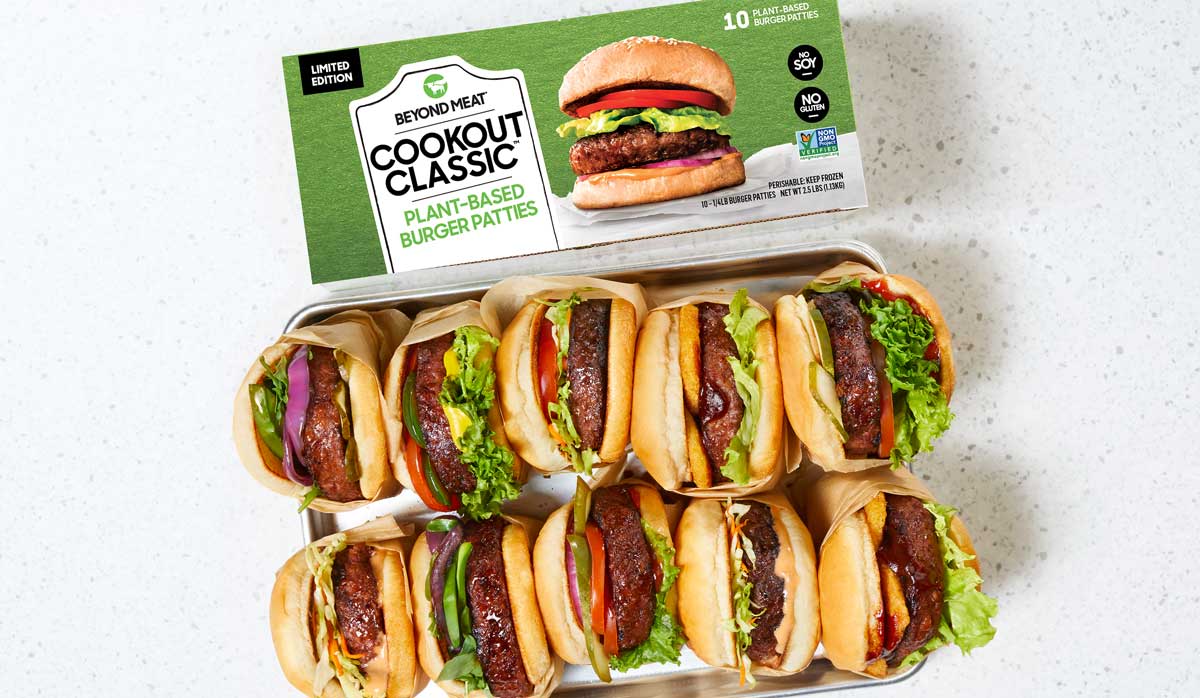The “Curse” In Jell-O’s Legacy That Affected Its Family And City

A series of psychogenic episodes in the “town that Jell-O built” took the media by storm a few years ago. It was described as “mass hysteria,” “mysterious tics,” “Tourettes symptoms,” and “mystery illnesses.” But not once did any description of it come close to the truth of what happened and what the cause was — until now.
Between 2011 and 2012, a group of girls in LeRoy, New York made headlines when they all began experiencing “Tourette’s syndrome-like symptoms” with an unknown cause. LeRoy is the birthplace of Jell-O, and where the original factory once stood. But it’s the once-beloved snack brand’s attachment to the whole ordeal that makes this story particularly infamous.
The symptoms these girls experienced included uncontrollable spasm-like movements, uttering repeatedly strange noises, convulsive fits, and anxiety attacks. Officially, the diagnoses came in as “mass psychogenic illness” and “conversion disorder,” but the source of it was still unknown. There were loads of explanations offered up by the media, including mold in the walls, toxic spills, and other theories.
Allie Rowbottom, one of the surviving members of the family that owns Jell-O’s patent, has a more vivid and intricate understanding of the real causes. She partially blames her family, who lived in LeRoy, as well as Jell-O itself, for why those girls experienced the symptoms they did. She speaks from experience, as herself, her mother, and her grandmother all went through the exact same thing: something they call “The Jell-O Curse.”
That curse spawned from oppressive patriarchy and misogyny, and to Rowbottom, that’s what those girls experienced.
Rowbottom’s new book, Jell-O Girls, explicitly details how femininity was skirted and diminished by her family and by Jell-O over the course of both of their histories, and how that has translated into what happened with the LeRoy girls a few years ago. The patriarchal shadow cast by those involved with Jell-O is one that just wasn’t exclusive to the town’s culture. As through its passively sexist marketing strategy, it had woven itself into the fabric of American history.

Photo courtesy of Allie Rowbottom
Within the “Jell-O family,” there is a clear history of the women being physically and mentally abused by the men, including instances of sexual assault and rape. This was how the “Jell-O Curse” manifested itself, but while the men attributed it to money and lust, the women discovered misogyny to be the real reason. Rowbottom utilizes her grandmother, Midge, her mother, Mary, and herself as examples to convey this misogynistic and sometimes graphic timeline.
Among those three, Mary’s story is the most disturbing, especially when her own experiences in life and with Jell-O became deeply intertwined, and even more so once she became sick with cancer at a later age. “For my mother, Jell-O was more loaded,” Rowbottom told Foodbeast, “and when she was well, she avoided Jell-O, seeing it as a signifier of trauma she wanted to put behind her. Later, though, when she could eat nothing else, she accepted Jell-O glumly, like a past she couldn’t outrun.”
While the “Jell-O Curse” has affected all three of the women Rowbottom talks about, Mary was the one who suffered under it the most. This was partially because of how she learned about it at a young age. The men in her family attributed the “curse” to money and the “women that were drawn to it.” For Mary, though, it was the opposite: it was the men she was involved with inside and outside of the Jell-O family that were responsible for the rougher parts of her life, including trauma due to sexual assault and harassment from a very young age.
The roles she was defined into, whether it be as used for physical pleasure by a cousin or as housekeeper and caretaker by her company, led to her own psychiatric snaps and episodes. For Mary, these ranged from panic attacks to the symptoms the girls in LeRoy experienced a few years ago. It happened over multiple stages of her life, as well, ranging from her time in college to when Rowbottom was a young girl. It was these similar symptoms that made her recognize what was happening with the LeRoy girls, and why she wanted to get her story out.
Rowbottom shares the experiences from her and her grandmother that were also traumatizing and at the fault of the men of the Jell-O empire. But none exemplified more what happened with the so-called “curse” of patriarchal oppression and manipulation than what Mary went through.
It wasn’t just the family that owned Jell-O’s patent that had to deal with the traditional patriarchal ways of the men in it. Throughout the company’s history, its marketing campaign was oft targeted towards women, as Jell-O’s team saw them as the “housekeepers” and with very limited freedom. Rowbottom details several of these ads in her book, which included recipe books and advertisements all targeted to the women’s role as a host with limited independence.
For her, the commercials and marketing depict Jell-O as “a means of speaking about the history of women in America, the ways in which we’ve been silenced, the ways in which that silence has hurt us, hurt everyone, of every gender, race, class and orientation.” From their directions that relegate women to the role of housekeeper and party host to the inability to keep up with the changing desires of the modern women, Jell-O’s strategy in advertising has been a clear show of chauvinism in the past.
Why can Jell-O’s advertising and business be described this way? It’s because Jell-O’s marketing strategy had its hand in defining the roles of women that the patriarchy called them “crazy” to step out of. Women leaving the home, becoming more independent, and becoming more active in society was against that trend, and why Jell-O struggled so mightily to retain that key group of consumers in the long run.
In a way, this is how Mary revealed what the “Jell-O curse” really was to Rowbottom. “‘Growing up I learned it was money,’ she recalls her mother saying in the book. “Now I think it’s silence, and the sickness silence plants, like seeds, inside women. Jell-O made people silent,” Mary continued, “‘by convincing us we’re less powerful than we really are.’”
 Photo: Science History Institute // Wikimedia Commons
Photo: Science History Institute // Wikimedia Commons
Jell-O’s inability to keep up with the times and patriarchal ideals is what eventually did the city of LeRoy in. Heavily steeped in that culture, the city chose to keep the Jell-O factory running instead of preserving the nearby college of Ingham University, the country’s first for women. As a result, the factory eventually shut down as the company’s sales waned and Jell-O became a product of the past. The town’s economy then greatly suffered, and over time, the community reverted into a tiny village that relied on archaic takes on family values to survive. This, of course, included the restrictive constructsof patriarchy that women, especially in today’s day and age, have since outgrown and defied.
The girls of LeRoy who had “mass psychogenic illness” back in 2011 experienced the same symptoms that the Rowbottoms had over the years, and their experiences were just as unexplainable to doctors as the Jell-O family members’ symptoms were. Rowbottom describes it as a need to act out when there’s been so much oppression of independence just to satisfy roles that women were defined into but never had a say in.
“To express and exorcise one’s trauma, the myriad emotions that trauma entails, will never be a sign of weakness (despite what cultural forces may try to tell us),” she says, “but rather, a sign of strength.”






















